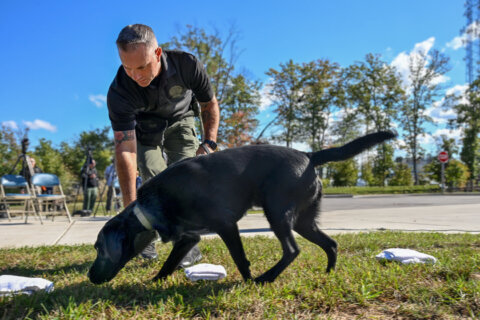One week after confusion when emergency sirens didn’t sound in historic and oft-flooded Ellicott City during National Weather Service flash flood warnings, a new alert protocol is now in place for the historic Maryland city and surrounding area.
On July 8, during heavy rains, while the National Weather Service flash flood warning mentioned the “western edge of Ellicott City,” the most flood-prone part of the city, along Main Street wasn’t covered by the warning, which is why sirens didn’t sound.
Ellicott City measures 30 square miles, with the historic district located on the eastern border, along the Patapsco River.
Since then, Howard County and the National Weather Service worked to clarify when the sirens — instituted by County Executive Calvin Ball — would sound.
“The county asked that the area that drains to the Tiber River, near Main Street, be separated, and asked that the area be called ‘Historic Ellicott City.’ We agreed with those changed, and we’ve implemented them as of this Tuesday, said Jason Elliott, senior service hydrologist with the National Weather Service.
With the changes, if the weather service flash flood warning refers to “Historic Ellicott City,” the sirens should sound.
“If you see Ellicott City, without the “Historic” designation in a warning, that’s a designation for the larger rest of the area that comprises Ellicott City,” said Elliott. Without the “historic” designation, sirens would not blare.
National Weather Service Flash Flood Watches are issued when conditions are favorable for a hazardous weather event to occur. Watches can be issued for larger geographic areas, including counties.
By contrast, Flash Flood Warnings are issued when hazardous weather is imminent or already occurring, and focus on a more narrow location.
When the weather service issues warnings online, they include “warning polygon areas,” which show most at-risk areas, superimposed on maps.
“The polygon allows you to visually see the area being mentioned in the text, so that will help you determine whether your area is, or isn’t at risk in a given situation,” Elliott said.








